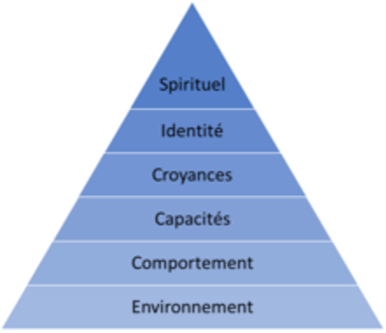A good solution applied to the wrong problem?
This solution does not work!
We are problem-solving machines, which is what we learn in primary and secondary school. Sometimes this leads us to rush to the solution without spending the necessary time on the problem itself.
In our role as leaders, managers, consultants or service providers, how many times have we been confronted with the statement: "this solution does not work"? With the unpleasant sensation of a misalignment between the problem you are being described and the solution that is provided? What if you had asked the question beloved of business coaches "...and how many times have you tried to apply this solution?" You would probably get answers ranging from "this is the third time we've tried". To "many times, we have been trying to solve this problem for months..."?
There are myriad reasons why a solution will not work. One of these may depend on the logical levels of the problem and its solution, to which we shall return. However, sometimes what is seen as an unsolvable problem is in the first place an inadequate solution. A solution that does not solve a problem that is not the 'right' one.
Coaching and in-house training
An example: an executive talks to his manager and says: "My colleague needs a coaching or some training! She doesn't know how to organize herself, and we're losing time and money because of missed deadlines... Working with the employee in question, her coach quickly makes it clear that she is not involved in the decisions that concern her, and which are taken by her manager.
Sometimes she's not even involved in the flow of information. On the one hand, the ability to confront this situation with one's manager will be at the heart of the work at coaching. This will enable them to request and obtain the information they need for their work. On the other hand, he needs to get back to his manager. Training may enable him to approach the practice of delegation and the notion of team autonomy in a different way.
The question that frequently arises is whether we're dealing with a solution that doesn't work because it's not designed to solve the actual problem. It won't be able to solve it if the problem hasn't been sufficiently analyzed and highlighted. The answer therefore lies upstream of the implementation of the solution. If you want to change the situation, don't ignore the essential task of identifying and framing the problem to be solved option !
In our leadership role, we expect our teams to be problem-solution pairs. When presented with a solution, how can we 'test' it? Ensure that the effort to be produced will be in the right direction?
Test the proposed solution and especially the problem it solves
The idea is to ensure that the solution devised will solve the problem facingorganization or the team. It's easy to find yourself in the opposite situation, due to a lack of preparatory work, pressure of time, the customer or management. This leads us to 'shorten' the initial phases of any problem-solving approach. As a result, we imagine solutions that may solve a problem, but not necessarily the problem in question.
Some possible approaches to protection:
1) Project yourself, visualise the result, the situation that will be created after the problem is solved. Imagine yourself a few days after the solution has been implemented: what is the new situation created? Is the problem completely solved, is the road free to move forward? What is the feeling from this observation? Based on the different branches of the Ishikawa diagram (Method, Materials, Environment, Materials, Labour), are all the conditions met?
2) Challenge the proposed solution from different angles, using simple protocols. For example, the 5 Whys or the QQOQCCP (What Who Where When How How Much Why). Or use any other method you are used to. Don't hesitate to insist on this validation, as long as you are in simulation and questioning, the cost of error is low. This is not the case when the implementation has started.
3) Challenge the proposed solution on the basis of the logical levels described by Robert Dilts (Dilts' Pyramid). The approach, which I am summarising all too briefly here, tells us that a problem can only be solved by a solution of an equal or higher level on this scale.

If we realise that the solution does not solve the right problem, or not entirely, what can we do? Most problem solving methods require us to spend time identifying and defining the problem. In Design Thinking we talk about empathising with the situation, with the people who are experiencing the problem! This is before any attempt is made to imagine a solution. You have to know how to abandon an unsuitable solution, which has taken you a long time, and look for the problem to be solved.
How to identify the problem to be solved?
To identify it, it is interesting to ask the question of the objective of the activity, or the team, that is impacted by the problem. Again, looking into the future and imagining the situation once the problem is solved.

It is particularly important to do this in problem-solving teamwork, co-building a solution. Ensure that all team members have the same understanding of the problem and are aligned with the objective.
Successful problem identification will then allow you to "helicopter" and nurture the autonomy and agility of the team. After having participated in the definition of the problem, you can validate the solution that the team has co-constructed and proposed to you. And leave the responsibility for the realisation to the team that is in control, which allows you personally to move on to another activity.
When analysing the solution, take time to list the obstacles and barriers to its implementation. And those that would prevent the problem from being solved. Identify the resources needed for the solution, those that exist to mobilise them and those that are missing. If key resources are missing, there is no point in starting... Finally, you can follow the steps of S. Mastrogiacomo's Team Alignment Map. And carefully assess the risks that would prevent the solution from being implemented.
A coach expert in Team Alignment Map can help you to familiarize yourself with this method for the first time.
Does the same question apply to the choice of lens?
The manager's first role is to clarify the environment and the constraints of the situation. Then, to ensure the relevance of the solution proposed by the team. The team is responsible for implementation. Similarly, the manager is responsible for ensuring that the objective is the right one. That it is shared and understood by all stakeholders.
Finally, it is the manager's responsibility to know whether a first order change will be sufficient. That the system-team will be able to solve the problem within its normal functioning. Or to identify whether a 2nd order change is needed to break the homeostasis. And allow the system to move on to a new stage in its evolution.
How to support a company in difficulty | Implementation

Finally, the proposed solution (by the team) should include measurement and control points. These should be developed and discussed together, and will allow the stakeholders to monitor the implementation of the solution. And to evaluate its effectiveness in solving the problem.
This working process is extremely useful for enhancing the efficiency and performance of the teams and the manager.
It can be complicated to implement at first, especially in deadline-driven work environments.
Calling on a coach professional specialized in coaching team building to facilitate the implementation of this kind of process ensures a strong return on investment.
The team then moves to a higher level of autonomy and profitability. The manager frees up time to work on his or her own files, supported by a strong and reliable team.
For more information, contact Alain Giannattasio
Links, references, credits
- Ishikawa - Fishbone Diagram
- Robert Dilts
- Team Alignment Map
Discover also AAA+ Coaching and Training on Facebook and Linkedin?
Are you looking for tips for successful career progression?
Sign up at newsletter and receive our offers and tips for better professional development.

